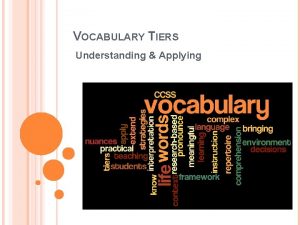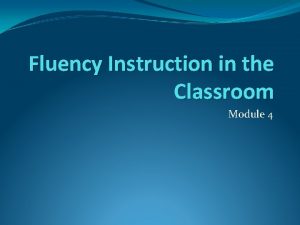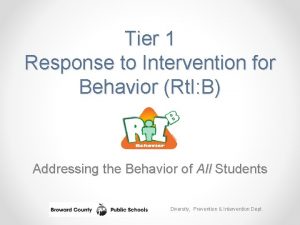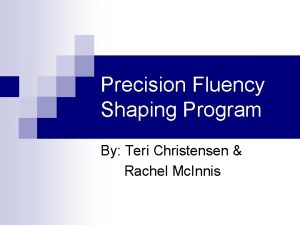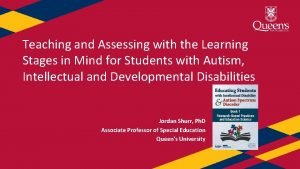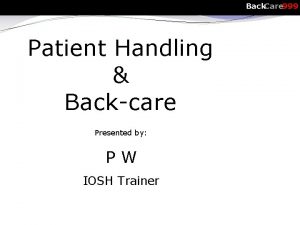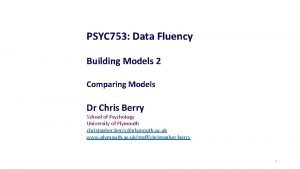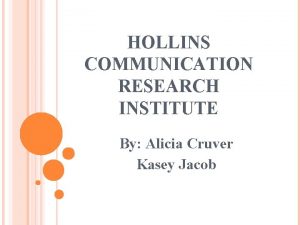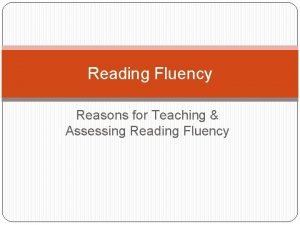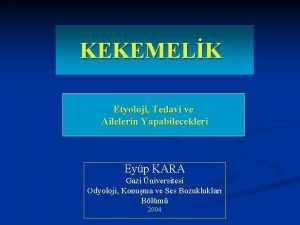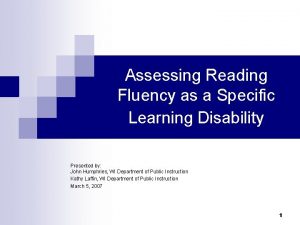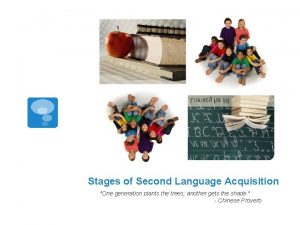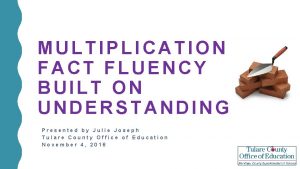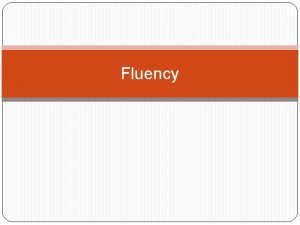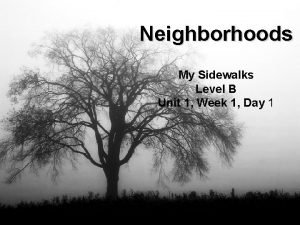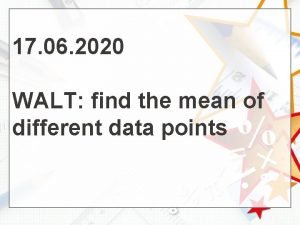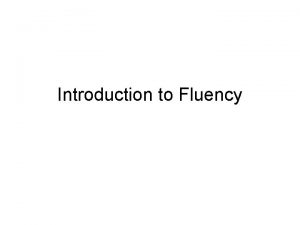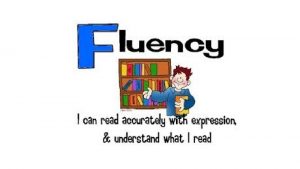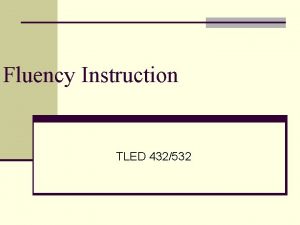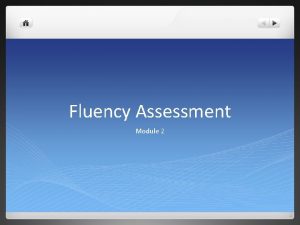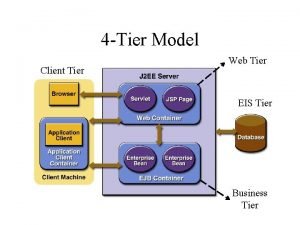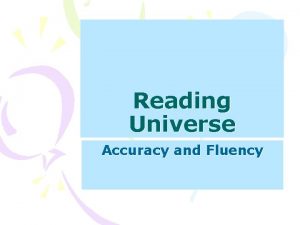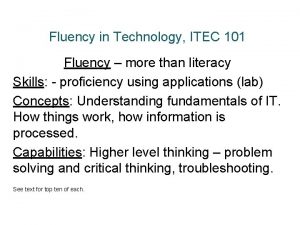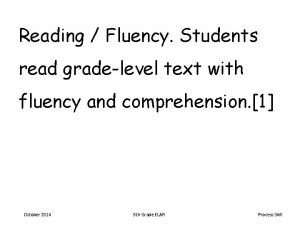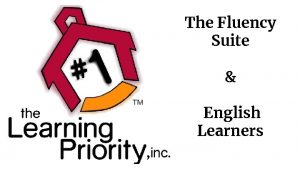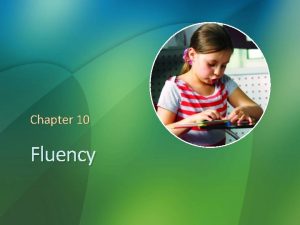Fluency Instruction Tier 2 3 Module 5 Tier

























- Slides: 25

Fluency Instruction Tier 2 & 3 Module 5

Tier 2 and 3 Fluency Instruction In this module, participants will learn instructional methods for students who are below benchmark in reading fluency.

Learning Target #1 Teachers will understand the three subtypes of poor reading and how they connect to fluency.

Poor Readers Phonologically Based Reading Difficulties Weak in decoding and word recognition Trouble identifying phonemes Trouble identifying words Trouble recalling and manipulating sounds within words Struggle with nonsense word/real word tests (Moats, 2009)

Poor Readers Slow or Dysfluent Reading Accurate but unable to recognize words quickly Have trouble storing letter patterns and words in memory for automatic recognition (Moats, 2009)

Poor Readers Language Comprehension Problems Can be slow and/or inaccurate in building connections among meanings and ideas Lack expression (prosody) High error rate when timed because they aren’t processing meaning Need comprehension instruction at all levels (word, sentence, paragraph) WE OFTEN THINK A STUDENT HAS A COMPREHENSION PROBLEM WHEN REALLY IT’S A PROBLEM WITH WORD RECOGNITION OR AUTOMATICITIY. (Moats, 2009)

Learning Target #2 Teachers will learn techniques for working with dysfluent readers at the word level.

Dysfluent Poor Readers The Word Level Flash a word bank of high frequency word cards to develop automaticity of words found in most texts. (U of U Reading Clinic) Sets of word with contrasting spelling patterns (hop, hope) can be given to students. Students can first mark the vowels long or short and then go back and read the words. Students can be timed to determine automaticity growth. (U of U Reading Clinic &Moats, 2009)

Dysfluent Poor Readers The Word Level--The Herman Reading Method Place students in small groups. Use words that have already been taught. Create a deck of 16 cards and place them face down. The first player draws a card and the teacher silently counts 3 seconds while the student tries to read the word. If the word is read in 3 sec. , the student keeps the card. If not, the card goes back in the deck. (Moats, 2009)

Learning Target #3 Teachers will learn techniques for working with dysfluent readers at the phrase and sentence level.

Dysfluent Poor Readers The Phrase/Sentence Level-Fry Phrases-Phrases that contain the most frequently used words that make up two thirds of everything read in elementary. Rasinski recommends that students should learn 100 -200 words each year. Create opportunities to read several times a day in class and/or send home to practice with a parent.

Dysfluent Poor Readers The Phrase/Sentence Level-Phrase-Cued Oral Reading is an activity that will allow students to practice reading words grouped together in meaningful phrases to increase fluency and comprehension. Students first read text/ that has been divided/ into meaningful phrases. // The teacher can use/ a pencil eraser/ to scoop under each phrase/ as the students read. // Students can also/ scoop and read/ in their own text. //

Learning Target #4 Teachers will learn techniques for working with dysfluent readers at the passage level.

Dysfluent Poor Readers The Passage Level Students who struggle with fluency often benefit from practicing along with a fluent reader until they can read the text fluently on their own. Scaffolding can take students from hearing a model of fluent reading to being able to fluently read on their own. Assisted Reading is a method in which a proficient reader assists a struggling reader. (Rasinski, , 2010)

Dysfluent Poor Readers Assisted Reading—Echo Reading-A method of reading that provides a great deal of support for nonfluent readers Teacher models a chunk of text as student(s) track print Students repeat or copycat the chunk Continue with the process until the students can move toward less scaffolding (U of U Reading Clinic)

Dysfluent Poor Readers Assisted Reading—Choral Reading-Students have the support of others reading the text along with them No model is provided before the choral reading Maximizes reading time from dysfluent students and supports students who are reading difficult text

Dysfluent Poor Readers Assisted Reading—Neurological Impress Method/Simultaneous Oral Reading (SOR) Similar to choral reading using a partner Preview the vocabulary and content Teacher reads as student tracks Student reads the same text while the teacher pulls the student along with his/her finger Repeat until student is ready to read independently

Dysfluent Poor Readers Assisted Reading—Paired/Buddy Reading Students with similar reading levels are paired Students sit side by side with good posture Students choral read, taking turns with who acts as teacher and who acts as student on each page Teacher reader asks what the author wants them to know at the end of the page (U of U Reading Clinic)

Dysfluent Poor Readers Assisted Reading—Reread-Adapt and Answer. Comprehension (RRAC) Effective with 1 st through 3 rd grade students Will benefit students who have both fluency and comprehension problems (Moats, 2009)

Accuracy and Rate Criteria (U of U Reading Clinic)

Reread-Adapt and Answer-Comprehension (RRAC) Text Level Passages are short Passages focus on one main idea Passage length criteria: › › 53 -66 words for 1 st grade 89 -111 words for 2 nd grade 107 -133 words for 3 rd grade 123 -153 words for 4 th grade (Moats, 2009)

Boosting Fluency and Comprehension to Improve Reading Achievement http: //www. chartlytics. com/uploads/3/2/2/5/322 58955/therrien_gormley_kubina. pdf

Application Task #1 Read the information on Phrase-Cued Oral Reading. Create a lesson for a group of students who need to practice prosody and phrasing. Share the text, how you divided the text into phrases, and what happened after your students participated in the phrased reading. Explain why you would or wouldn’t continue using the activity with your students.

Learning Task Read the article, Boosting Fluency and Comprehension to Improve Reading Achievement. View the video of an RAAC intervention. This information will help you complete Application Task #2.

Application Task #2 Go to the Read Naturally website by clicking on the link provided and view Determining Who Needs Fluency Training. From there, view the Hasbrouck-Tindal oral reading fluency norms. Use assessment data from your classroom to locate 3 of your students (who struggle with fluency) on the Oral Reading Fluency Norms Table (Hasbrouck-Tindal table). Set some fluency goals for those students based on the information given with the table. Create a fluency training program for those students using two of the Assisted Reading methods we learned about (slides 15 -22).
 Tier 1 tier 2 tier 3 vocabulary
Tier 1 tier 2 tier 3 vocabulary Tier three vocabulary
Tier three vocabulary Fluency oriented reading instruction
Fluency oriented reading instruction Tier 1 instruction
Tier 1 instruction Differentiated instruction vs individualized instruction
Differentiated instruction vs individualized instruction Direct instruction method
Direct instruction method C device module module 1
C device module module 1 Precision fluency shaping program review
Precision fluency shaping program review Dibels first sound fluency
Dibels first sound fluency Acquisition fluency maintenance generalization
Acquisition fluency maintenance generalization The orthodox lift is
The orthodox lift is Fluency with information technology
Fluency with information technology Data fluency
Data fluency Precision fluency shaping program review
Precision fluency shaping program review Word reading accuracy
Word reading accuracy Solution fluency
Solution fluency Fluency friday
Fluency friday Fluency shaping tekniği
Fluency shaping tekniği Fifth element strain
Fifth element strain Fun with fluency
Fun with fluency Definition of reading fluency
Definition of reading fluency Speech emergence stage activities
Speech emergence stage activities Building fact fluency graham fletcher
Building fact fluency graham fletcher What is fluencing
What is fluencing My sidewalks level b unit 2 week 3 comprehension test
My sidewalks level b unit 2 week 3 comprehension test What does varied fluency mean
What does varied fluency mean
